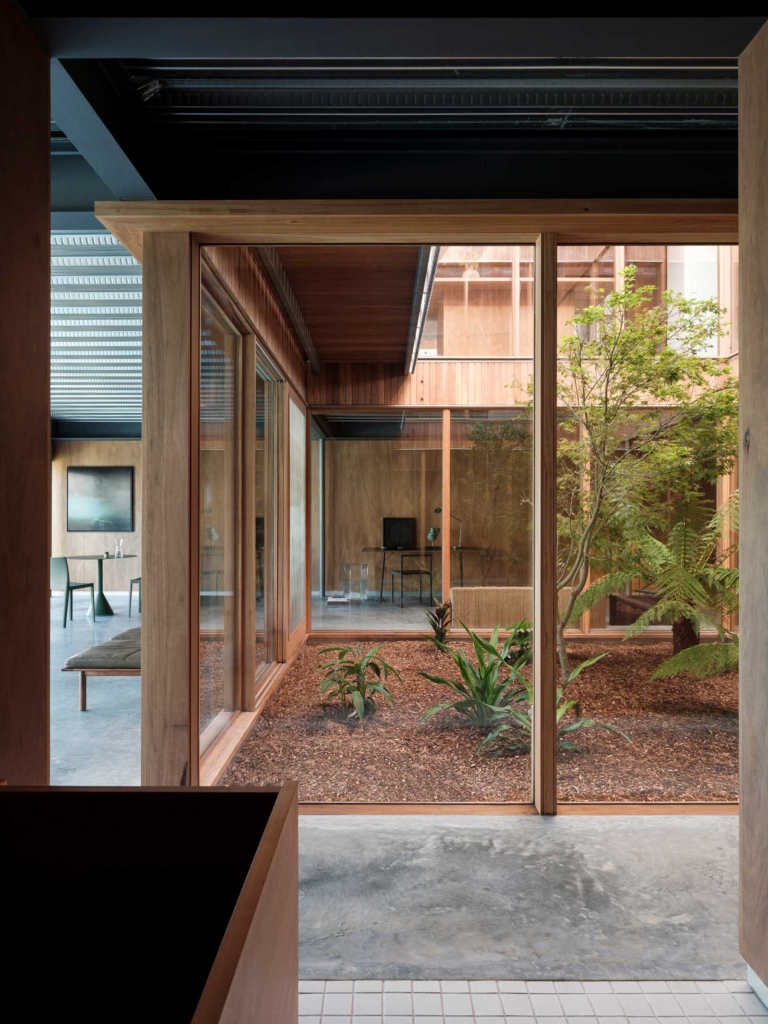
Dismantling the Expected – Upside-Down-Back-To-Front House by Carter Williamson
Upside-Down-Back-to-Front House dismantles the expected inside an otherwise traditional period-style shell. Although Carter Williamson shook up the interior, the project maintains balance and order to propose a home that speaks to its residents.
Within the walls of its 1880s worker’s cottage façade, Upside-Down-Back-to-Front House dismantles the familiar lines and shapes of the historic building into forms that challenge expectations, while still speaking to its owners and how they live. Located in the inner-Sydney suburb of Rozelle and spanning 190 square metres, the cottage stretches between two adjacent streets, creating two frontages and multiple entrances. In devising the best configuration of the internal spaces to suit the current owners, Carter Williamson flipped the entry from the traditional frontage, with its main entry now technically in its rear, along Starling Street. The new layout was part of the overall vision to separate the active elements of the home from the passive.
Together with Melissa Wilson Landscape Architects, Carter Williamson’s design responds to its unique urban context, building connections to its neighbours and the broader architectural landscape of the area. The agreed approach was to build it once and build it well, a philosophy that informed the finishes, the detailing and the resulting refinement. Central to this was the use of robust materiality that simultaneously preserves the heritage character while integrating a consideration of sustainability. This inspired the use of second-hand materials, such as timber salvaged from a bridge for the staircase and other internal details.
Located in the inner-Sydney suburb of Rozelle and spanning 190 square metres, the cottage stretches between two adjacent streets, creating two frontages and multiple entrances.
The affectionate naming refers to the upside-down inversion of the new entry and to the back-to-front reorientation of the movement and natural flow within the home. Entering from the lower level required an internal reconfiguration, reconsidering the allocation of spaces to better suit intended use. The upper level houses the sleeping area, perching above the more active, louder spaces below. The middle level sees the living areas stretch across an open floor plan – from the feature sandstone skylight, through to the garden and balcony where a connected, open lounging and kitchen take stage. The insertion of strategically placed lightwells throughout encourages the flow of natural light – a consideration that was lacking in the home’s original design.
Upside-Down-Back-to-Front House sees a crisp palette lighten the walls and ceilings, framed by polished concrete flooring throughout. Intentional joinery and warming timber break up the coolness, adding depth to the hard-wearing robust materials. Carter Williamson dismantle the expectations of a traditional renovation, completely inverting the functioning of the home and, in doing so, making it a more interesting and effective space for its inhabitants. Embracing sustainable principles, Upside-Down-Back-to-Front House connects both to its owners to the world beyond its walls.
















